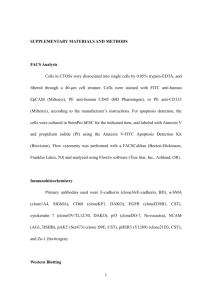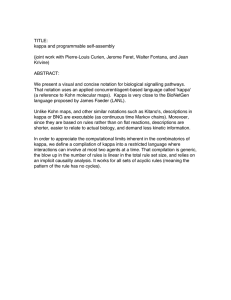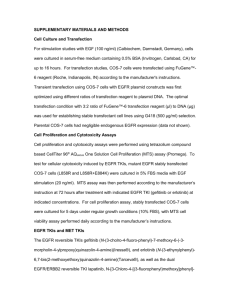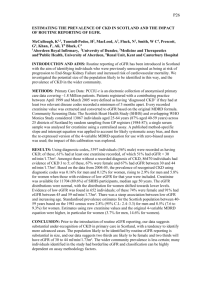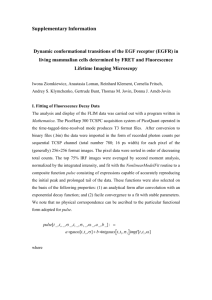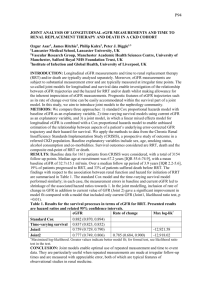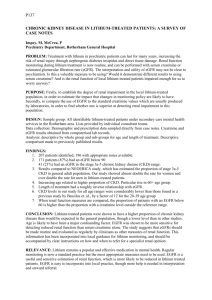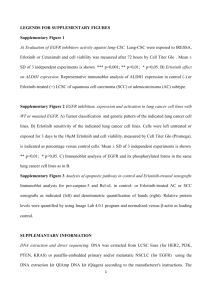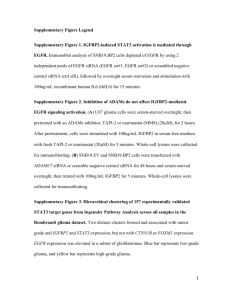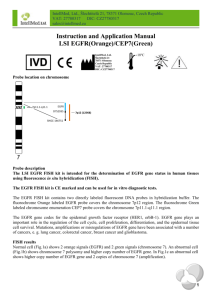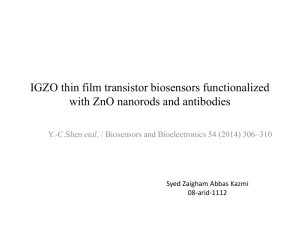Article title: PI3K independent activation of mTORC1 as a target in
advertisement
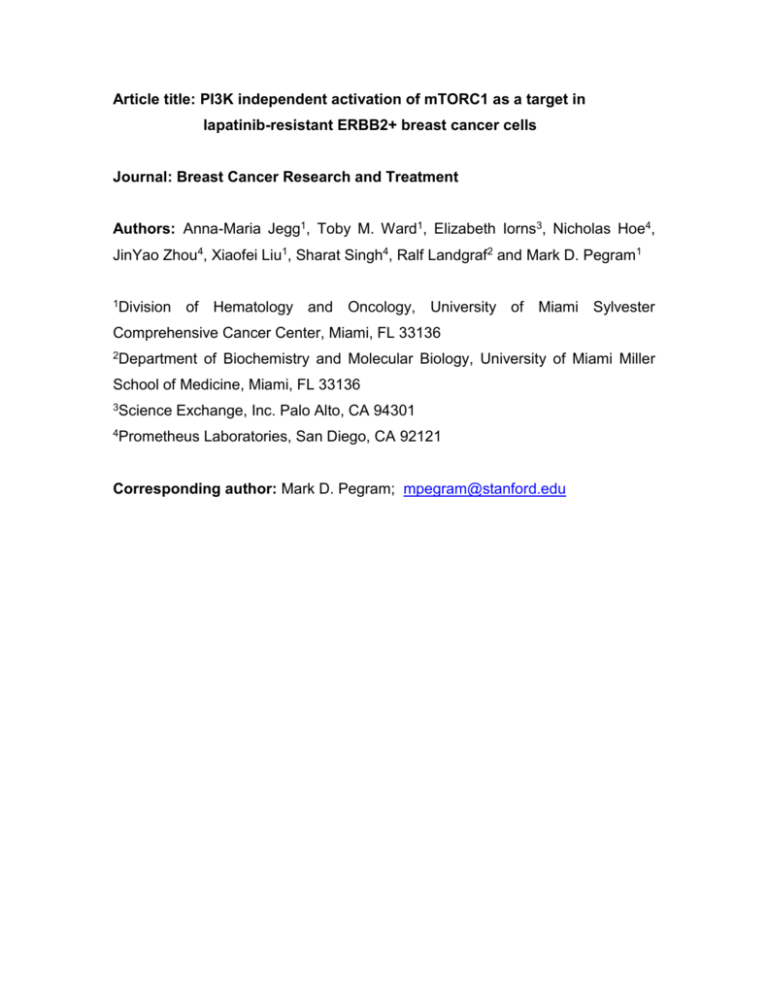
Article title: PI3K independent activation of mTORC1 as a target in lapatinib-resistant ERBB2+ breast cancer cells Journal: Breast Cancer Research and Treatment Authors: Anna-Maria Jegg1, Toby M. Ward1, Elizabeth Iorns3, Nicholas Hoe4, JinYao Zhou4, Xiaofei Liu1, Sharat Singh4, Ralf Landgraf2 and Mark D. Pegram1 1Division of Hematology and Oncology, University of Miami Sylvester Comprehensive Cancer Center, Miami, FL 33136 2Department of Biochemistry and Molecular Biology, University of Miami Miller School of Medicine, Miami, FL 33136 3Science Exchange, Inc. Palo Alto, CA 94301 4Prometheus Laboratories, San Diego, CA 92121 Corresponding author: Mark D. Pegram; mpegram@stanford.edu Quantitative real time PCR (qPCR): RNA was isolated from SKBR3 and SK-lapR cells with Trizol (Invitrogen) and cDNA was synthesized using SuperScript III First Strand Synthesis System for RT-PCR (Invitrogen) with oligo(dT) according to the manufacturer’s instructions. Real-Time qPCR was performed using SYBR Green I Master mix (Roche Applied Science) and EGFR GCACCTACGGATGCACTGGGC-3’ specific primers and (EGFR_Fwd: EGFR_Rev: 5’5’- AACGATGTGGCGCCTTCGCA-3’) on the LightCycler® 480 (Roche Diagnostics) according to the manufacturer’s instructions. Standard curves were calculated for all reactions with serial dilutions of SKBR3 cDNA to determine reaction efficiency. The expression of EGFR-mRNA is shown relative to expression in SKBR3 cells after normalization to GAPDH as endogenous control. [mean ± SD of triplicate experiments] Fluorescent in situ hybridization (FISH) analysis Preparation of formalin fixed and paraffin embedded cell pellets: SKBR3 and SK-lapR cells (1-5 x 107) were collected by trypsinization, washed twice with 1xPBS and fixed in 10ml of a 10% (v/v) neutral-buffered formalin solution over night. The following day cells were pelleted by centrifugation at 500 x g for 10 minutes, formalin solution was removed and cells were resuspended in 3-4ml of liquid 3% low melting point (LMP) agarose. Before solidification, aliquots of 1.2 ml were transferred to 1.5ml microcentrifuge tubes and cells were pelleted by quick spin and incubated at 4°C for 15 minutes. The agarose embedded cell pellet for each cell line was carefully removed from the microcentifuge tube and transferred to an embedding cassette, which was then placed in a 70% ethanol solution for 24 hours before the cell pellet was embedded into paraffin blocks. EGFR-FISH analysis: Sectioning of cell pellets embedded in paraffin blocks and subsequent FISH analysis with EGFR specific DNA probes (LSI EGFR 7p12 amplification probe) was performed at the cytogenetic and molecular diagnostic laboratory at the University of Miami Miller School of Medicine. A probe for chromosome 7 centromere (CEP7, D7Z1) was used as control and to determine gene amplification via the ratio of EGFR/CEP7. FISH signals for EGFR and centromere 7 were scored in a total of 200 cells per cell line using the criteria described in (1). 1. Varella-Garcia M. Stratification of non-small cell lung cancer patients for therapy with epidermal growth factor receptor inhibitors: the EGFR fluorescence in situ hybridization assay. Diagnostic pathology. 2006;1:19.
